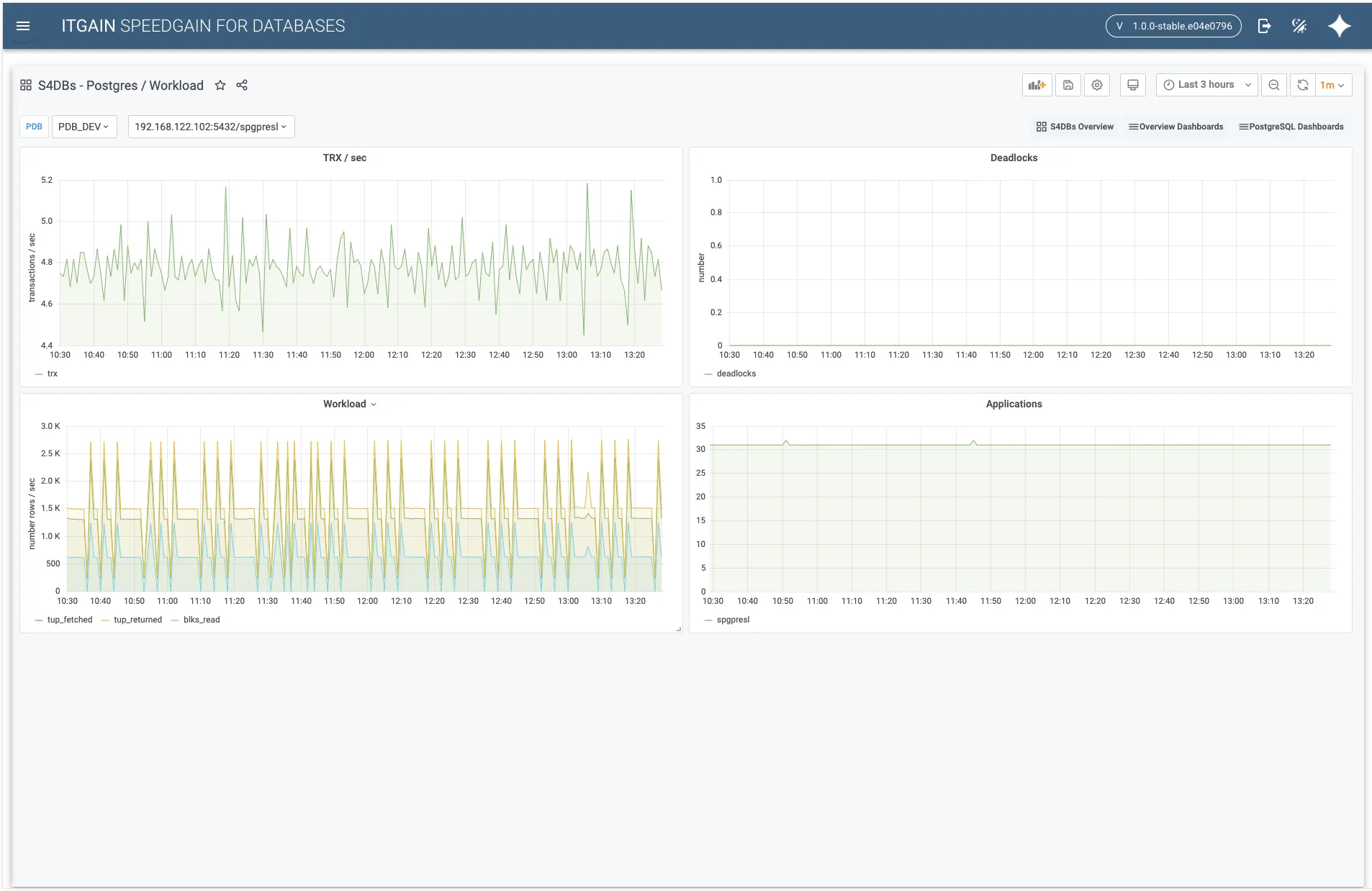Save time with agentless monitoring of Db2 and PostgreSQL databases
Database monitoring solutions help database administrators monitor the health of their system and highlight problems in its operation, ensuring good system performance and preventing outages. With the ever-increasing number of critical databases and the need to monitor database systems from different vendors, organizations face hurdles that must be overcome.
The challenge
Adding new database systems to monitoring by a monitoring tool can involve additional installation work, for example, to install agents and monitoring scripts. Not only does this cost time, but it may not even be possible for the database administrator (DBA) to do it himself, because he lacks the permissions to install agents on the servers, for example. In this case, other departments would have to be involved, which further increases the time required and creates additional sources of errors. Agentless monitoring, as offered by Speedgain for Databases, can reduce this effort.
What is agentless monitoring?
Agentless monitoring essentially refers to using remotely callable built-in functions of the system being monitored, rather than installing additional utilities on the target system.
What are the benefits of agentless monitoring with Speedgain for Databases?
Our holistic database monitoring tool Speedgain for Databases works completely agentless. It is currently suitable for monitoring Db2 and PostgreSQL databases and will support other databases in the future. Only the Speedgain Collector and a component for providing REST services for the web frontend need to be installed once on any central server (but not on the systems to be monitored). Databases can be included in monitoring and analyzed in the web frontend without additional installations on the database servers.
The web interface offers the possibility to include database systems including operating system data in the monitoring directly and without additional tasks. For example, the cataloging of a new database, which is common in the Db2 environment, is not necessary for monitoring. The time savings and risk are considerable compared to agent-based monitoring solutions. In addition, the risk of errors is significantly reduced due to the ease of installation. Furthermore, these advantages also apply in case of maintenance activities on the components, since only the central component and no decentrally installed agents need to be updated.
The advantages at a glance
- Fast installation:
Agentless monitoring can be easily and quickly installed centrally. Agent-based monitoring, on the other hand, requires agents to be deployed on each server. - Easy maintenance:
Operational overhead is lower because you don't need to update or upgrade agents. - Lower cost:
A lower TCO (total cost of ownership) due to savings on maintenance and operations.
Conclusion
By easily integrating databases into an agentless monitoring tool, they can be included in monitoring more quickly. Database administrators not only save time during installation, but can benefit from using Speedgain for Databases at an early stage to identify and fix problems faster.
If you would like to learn more about the benefits of Speedgain for Databases, take a look at our blog and stay up to date.
If you have any questions, feel free to contact us. We cordially invite every interested DBA and production manager to check out Speedgain for Databases and download a free trial version.

